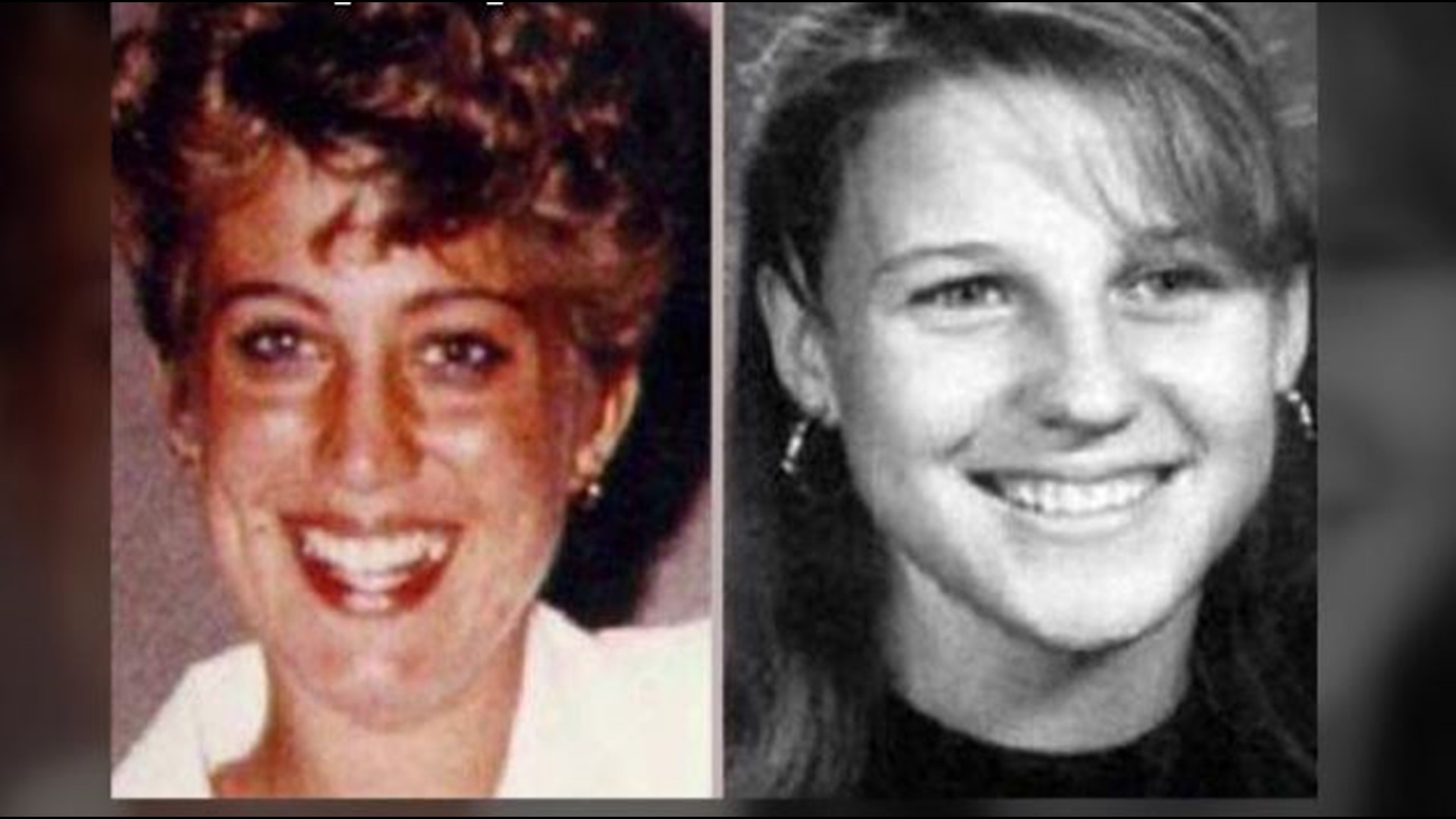PHOENIX — The trial for the man accused of the "Canal Murders" began on Monday.
Bryan Patrick Miller was arrested in January 2015 in connection to the case after a breakthrough in a DNA sample led investigators to him.
In the opening remarks of the trial, Bryan's defense attorney argued that Bryan was in a dissociative state when the killings took place, and as such he should be found not guilty by reason of insanity.
The Canal Murders were a series of killings dating back to the early 1990s.
The first victim, Angela Brosso disappeared on the night before her 22nd birthday on Nov. 8, 1992. She went for a bike ride along the canal near 25th Avenue and Cactus Road.
The following day, investigators found Brosso's naked decapitated body near Cave Creek Park. Eleven days later, her head was found in the Arizona Canal a short distance away.
Ten months later on Sept. 22, 1993, 17-year-old Melanie Bernas disappeared in the same area while also riding her bike. Phoenix police found her body mutilated not far from the first crime scene.
At the time of the killings, police said there was no DNA but in 1999 the Phoenix Police Department crime lab was able to identify suspect DNA from evidence taken at the original crime scenes.
Their research also connected the same suspect to both murders. But an FBI database revealed no matches and the trail went cold.
In 2013, investigators took the case to a society of experts on the East Coast for guidance. That group's expertise helped cold-case investigators focus on Miller.
"When you've worked on a case this long, when you've gone back and forth through these kinds of cases, to be able to at least make notifications to two mothers that we have made an arrest in a case that has changed their lives forever is part of why these guys do this. It is part of why they go back through these cases," Phoenix police Sgt. Trent Crump said back in 2013.
Investigators at the time were able to confirm that Miller left Phoenix shortly after the killings. His juvenile record helped identify him as a suspect.
The case got a big break in 2014 when a forensic genealogist from Identifinders assisted Phoenix Police in the case.
Colleen Fitzpatrick was in Phoenix at the International Symposium of Human Identification conference, an event officers were also attending, when she requested to visit the Department.
"I presented my idea that they could use genetic genealogy to apply it to cold cases... in those days it was more primitive... we only used the markers of the Y chromosome and genealogists had been using that since the 2000s," Fitzpatrick said.
"Y-DNA you don't know who it belongs to, so why not take that Y-DNA and compare it to the genetic genealogy databases and maybe try and come up with a last name for the unknown assailant, offender, or John and Jane Doe," she added.
Investigators sent Fitzpatrick the Y profile that was gathered from semen evidence collected at the crime scenes.
"I put it in some software that I have, and that searches the genealogy data for matches, and I came up with six Millers," Fitzpatrick said.
She then sent Phoenix investigators her findings saying, "The name Miller came up in my analysis."
In all, Fitzpatrick helped authorities narrow the list of suspects from 2,000 to just five, one of whom was a close match to the psychological profile the FBI had developed for the then 42-year-old Miller.
In a rouse, undercover detectives obtained Miller's DNA during a meeting for an alleged job interview at a restaurant.
Investigators got a mug Miller used and left behind at the business after the meeting, to get his DNA.
"Our crime lab last night compared it to the DNA collected at the scene of these two homicides in 1992 and it was a positive match," said Sgt. Crump in 2015, weeks after Fitzpatrick had forwarded the department the suspects' last name.
On January 13, 2015, Miller was arrested.
During a post-Miranda interview, he admitted to living in the Phoenix area during the time of the murders, near the bike paths, and that he used the bike paths while driving his bike, arrest documents said.
Court paperwork said Miller could not explain how his DNA matched the DNA collected from the victims.
Phoenix police raided Miller's home, which he shared with his teenage daughter, and spent days pulling out a multitude of items. Investigators seized clothing, numerous computers, hard drives and flash drives.
They also searched his car, a black-and-white Ford Crown Victoria, and his personal locker at the Amazon fulfillment warehouse on Buckeye Road.
In petitioning for the warrant, detectives told the judge they were looking for any and all knives or knife holsters Miller may have, work boots and shoes, and cellphones.
Investigators were seen removing at least one rusted bicycle, but the bike does not appear in the unredacted portion of the search warrant.
Seven years after his arrest, Miller will go on trial on October 3rd. The now 49-year-old is charged with two counts of first-degree murder, two counts of kidnapping, and two counts of attempted sexual assault. The state is seeking the death penalty.
Up to Speed
Catch up on the latest news and stories on the 12News YouTube channel. Subscribe today.

